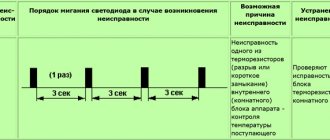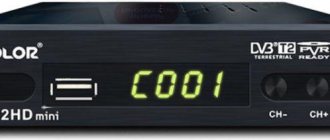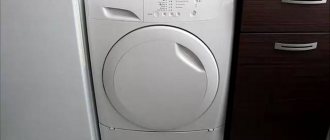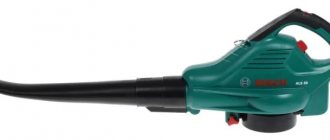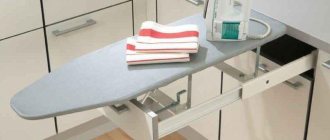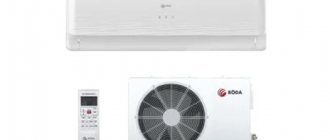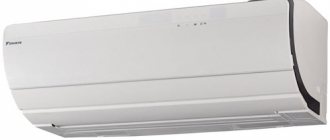Types of monoblocks
By the term “air conditioner,” users most often understand monoblock devices.
They are designed to cool the air in a room to a certain temperature. These devices are distinguished by the fact that all their design elements are located in a single block. Household block air conditioners can be of two types:
- window;
- mobile.
Devices of the first type are so called because they are installed in a window opening. Such air conditioners can not only cool the air, but also filter, humidify and heat it. Despite their inexpensive cost and good efficiency, window models have lost their popularity due to the fact that double-glazed windows are being installed everywhere. Today, for the correct placement of such a device, it is necessary to make a custom-made window frame.
Mobile air conditioners are an excellent option for those who use a cooler only in the warm season and do not want to “attach” it to one of the rooms. Such devices can be installed in any room where there are windows, since a hose is placed in them to supply air to the device. Mobile devices can be taken with you on trips to the country or placed in large apartments that do not have enough cooling from a split system. Significant disadvantages of this type of air conditioners are their high noise levels and low performance.
Split system is
Split system - air conditioner, air conditioning system, consisting of two units: external (compressor-condensing unit) and internal (evaporative). The external unit is mounted outside the air-conditioned room. The indoor unit is installed inside an air-conditioned room or in the ventilation system of a building. The blocks are connected to each other by heat-insulated copper pipes.
A characteristic feature of a split system is the ability to not only cool the air, but also heat it. The compressor of the device may begin to move air masses in the opposite direction if the operating mode is switched.
Features of industrial climate control equipment
Industrial climate control equipment is a similar set of devices. Their main difference lies in the scale of the controlled space: the devices are capable of maintaining the selected air temperature in very large rooms. Their device differs in the size and operating power of the blocks, but the principle of operation and purpose remain unchanged.
Household options are much less demanding to maintain. Even a budget split air purification and air conditioning system can operate automatically for a long time, without any user intervention.
Connection between fastening and maintenance of climate systems
The choice of the appropriate device model also depends on the type of building. For air conditioners used in private real estate and high-rise apartment buildings, different mounting technologies are applicable. Even if you have spare parts, it is quite difficult to repair the external unit of the split system already on the third floor. In addition, without understanding how to install climate control equipment yourself, it is unlikely that anyone will risk high-altitude installation.
The device also needs to be periodically refilled with the compounds necessary for successful operation, filters changed, and maintenance carried out. People living in high-rise buildings prefer to entrust the listed types of work to professionals. But this does not make repairing or refilling the air conditioner any less dangerous.
Types of split systems
The most commonly used are wall structures. Indoor modules are usually rectangular in shape. They are attached directly to the wall surface, parallel to the flooring. The power of cooling devices is greater than the power of mobile structures. Such equipment is used to maintain comfortable climatic conditions in a medium-sized apartment or office.
To cool larger rooms, column air conditioners are used. They have impressive dimensions and great power. They are installed on the floor. The device looks like a column. That's why it received a specific name. Typically, such structures are used to maintain the required temperature in restaurant premises, shopping and entertainment centers, bars, clubs and fitness halls, where large numbers of people gather. Air masses are cooled quickly. The air flow moves upward. The large size of the device does not prevent it from organically fitting into the design of the room. The developers took care of the stylish design of the device.
When installing floor-ceiling structures, two installation options are possible. Each position differs in the operating principle of the cooling system. When mounting the indoor module close to the floor surface, the air flow will be directed upward along the wall covering. If the installation is carried out on the ceiling surface, the movement of air masses will occur in a parallel plane.
To ensure that the air conditioner does not stand out and is invisible, cassette type cooling devices are used. It fits organically into the design of the suspended ceiling. Only the front part of the system is visible from the outside. The air conditioner has sufficient power and can be used to cool large rooms.
A similar installation method is used when installing structures with a channel device. They are also mounted under the surface of the suspended ceiling. Special air ducts are used to distribute cooled air. Through them, air masses enter various points in the room.
How to choose a split system?
It is no secret that the air conditioner is selected for an apartment or house based on its size and power. This is where the knowledge of most users is limited. It's not always clear what you need to focus on first to achieve maximum efficiency while saving money.
Below we will consider the main aspects that you should pay attention to during the selection process.
Main settings
When purchasing a split system to create a climate in a house or apartment, you should focus on a number of criteria:
- Area and height of the room.
- Level of solar activity in the room.
- Number of people living.
- Heat sources (operating equipment).
- Other factors.
How about 1 kW of power. If the room is combined with another room, you need to add its area.
What is an inverter system and what are its features?
In the coming years, an increase in demand for inverter split systems, which are more economical, is predicted. On average, the use of inverter technology can reduce energy costs by 40-50%. In addition, the advantages include:
- Less noise level.
- Rapid achievement of the required temperature.
- Increased resource.
- Possibility of smooth change of temperature mode.
The disadvantage of an inverter split system is that it is sensitive to voltage changes and has a higher price. It is also worth considering that repairing an inverter air conditioner or replacing a faulty element will cost more, because most of the spare parts are not standardized.
POPULAR WITH READERS: How to check an electric motor for serviceability?
The downside is that inverter split systems cannot be turned on when leaving the permissible temperature range. So, if a regular model starts up easily at -6 degrees Celsius, problems arise with the inverter device.
But this feature is an additional protection against improper operation.
Power
Special attention must be paid to the power of the device. Here, many people have a dilemma about how to achieve the required temperature in a large room without spending money on an expensive air conditioner. Such options must be immediately discarded. To cool a large area of an apartment or house, you need to buy a split system of appropriate power. In the process of calculating the indicator, it is worth taking into account:
- Room area;
- Ceiling height;
- The presence of heating devices (especially important when installed in the kitchen);
- Maximum number of residents;
- The number and size of windows, as well as their orientation in relation to the sun;
- Number of storeys. The higher the floor, the warmer it is inside the room.
To choose the right model by area, you need to know the performance (indicated in the abbreviation for the device) multiplied by three. As a result, you get the area of the apartment or house that can be cooled by the split system. For example, a designation with the number “12” indicates that the air conditioner is suitable for cooling 36 square meters.
The above type of calculation is suitable for a standard apartment and reflects only an approximate parameter. To get a more accurate indicator, you should turn to professionals.
But you shouldn’t buy devices with performance reserves. In this case, the compressor will constantly turn on and off, which will lead to a decrease in its service life. So, for an area of 21 to 27 square meters, an air conditioner with a “ten” or “nine” in the designation is more suitable.
Appearance
An important criterion that should be paid attention to is the external design of the split system. Most indoor units have a classic look, which is unlikely to appeal to connoisseurs of original interiors.
However, few manufacturers pay special attention to this aspect. Among the most interesting developments, it is worth highlighting Artcool from LG. For example, the main feature of Artkul Slim devices is an elegant body with a thickness of only 17.7 cm, a durable black glass finish, and LED backlighting.
Another option is Artcool “Gallery”. Unlike other devices, it has a square shape and the wall length is 12.9 cm. If desired, you can insert a picture or photograph into the front frame.
Another representative of this line, “Stylist,” has an original design. This split system has a milky white body with an inscribed circle and decorated with dynamic lighting.
Thanks to LEDs, it is possible to simulate sunset and other scenarios.
The more expensive the better?
There is a stereotype that the cost of a product directly determines its quality. This is a misconception. So, if we consider split systems for home or office, belonging to the middle and premium categories, the differences will be insignificant, and the difference in price will be very impressive.
Many manufacturers increase the cost of the device due to reduced noise levels, but in practice it is almost impossible to notice the difference.
The price of an air conditioner also depends on the installation of additional devices, including motion and activity sensors that save energy.
But what is the point of overpaying 10 thousand rubles if during the year you can only save 500-800 rubles on electricity. Also, when choosing, you should not focus on the country of origin. Products from China have long been equal in quality to goods from other countries.
Therefore, when choosing a split system, it is important to take into account two important criteria - the warranty period and the company that manufactures the product. Many are chasing compactness and lightness, which can be achieved by reducing the size of the heat exchanger.
As a result, the performance of the device suffers. More efficient filters may be installed in expensive models, but their effectiveness in protecting against viruses and bacteria is controversial and cannot be proven.
The service life of a split system, as a rule, depends on the main parameter - the quality of installation. So you shouldn’t buy an expensive model with free installation - you shouldn’t skimp on installation.
Types of compressors, and which one is better
The lifespan of the climate control device depends on the quality of the compressor. If a part suddenly fails, replacing it can cost half the price of a split system. That is why it is important to approach this nuance with special attention.
In modern models, compressors are hermetically sealed, so they cannot be repaired - the parts are installed as a whole.
There are several types of compressors:
- Rotary - devices with a rotating rotor. Their advantages are structural simplicity, uniform operation, low noise and compactness. In addition, such products are characterized by a lower price and increased reliability. The only drawback is that during their operation there are large friction losses. As a result, their use is possible only in low-power air conditioners. Although, such devices are also suitable for an apartment or house.
- Scroll compressors have a more complex design and are more expensive. Their advantages are a uniform and small load on the electric motor. This type of compressor has low noise, long service life, lightness and compactness.
- Piston compressors are obsolete types of compressors that are gradually going out of use. Their difference lies in their design simplicity and low cost. But the disadvantages are more serious - high noise, high vibrations and low reliability.
Taking into account the above, we can conclude that modern split systems for a house or apartment should be equipped with a scroll or rotary compressor.
The operating principle of cooling equipment and its composition
Despite the fact that in the understanding of many people, an air conditioner is a device for cooling air, this is not entirely true. The air conditioner is designed to control both temperature and relative humidity. It was for these purposes that it was developed more than 100 years ago.
The first air conditioner was developed in 1902 to combat humidity in printing plants. The idea belonged to the American engineer Willis Carrier, after whom one of the most famous companies in the development of climate control technology, Carrier, is named. The first air conditioner worked on the same principle as a modern split system, the only difference was in size.
To understand how the systems work and how they differ, let’s look at their simplified design. A modern air cooling device consists of the following elements:
- Compressor;
- Capacitor;
- Thermostatic valve;
- Evaporator;
- Additional devices: fans and temperature sensors.
To operate an air conditioner, you need a refrigerant - a substance that is in a sealed circuit and undergoes evaporation and condensation processes. Now specially developed freons are used for these purposes, which is better than the ammonia used previously.
The cooling device operates as follows:
- Freon under normal atmospheric conditions is in a gaseous state. In this form, it is also located in the circuit of a non-working system.
- After turning on the device, the compressor starts working, compressing the freon to high pressures.
- The high-pressure gas moves into the condenser, where it condenses and releases heat into the surrounding atmosphere.
- Freon in a liquid state moves towards the evaporator. After passing through the thermostatic valve, evaporation occurs. During evaporation, freon absorbs heat.
- The gas moves to the compressor and the cycle is completed.
This is the principle of operation of an air conditioner. Below we will look at the difference between a split system and an air conditioner.
Design
Each component of the split system has individual structural elements. The external unit contains:
- A compressor is a device that compresses freon and maintains its movement through the refrigeration circuit. It can be spiral or piston. Spiral products are more reliable, but they are more expensive than their piston “brothers”.
- 4-way valve. This part is mounted in reversible air conditioners. The task of the device is to change the direction of movement of freon through the system, which leads to a change in the function of the blocks. The external unit works for heating, and the internal one for cooling.
- The control board is an element characteristic of converter-type split systems. Other types of devices place the electronics on the indoor unit due to the risk of damage due to high humidity and temperature.
- Condenser is a unit in which freon is cooled and condensed. The air that passes through the air conditioner warms up.
- A fan is a device that provides air flow. Cheaper models have only one speed, which means the air conditioner can operate within a small temperature range. In more expensive devices, fans have 2-3 speeds, which significantly expands the functionality of the split system.
- The freon unit filter is a device that is placed in front of the compressor inlet and protects it from foreign elements. If the installation was carried out in violation of the rules, no filter will help.
- The quick-release cover is designed to cover the terminal block and fitting connections.
POPULAR WITH READERS: What is the difference between grounding and neutralizing
The indoor unit has a number of elements:
- The front panel consists of a plastic grille through which air flows into the unit. The panel can be dismantled if it is necessary to maintain the split system (for example, to clean the filters).
- Evaporator is a radiator designed to heat freon and evaporate it. Thanks to this device, the temperature of the passing air is reduced.
- The coarse filter is a plastic mesh that filters out large dust and animal hair. For the system to function properly, cleaning must be done once every 14 days.
- The indicator panel is a section of the indoor unit where a group of LEDs is mounted, reflecting the operating mode of the split system and signaling the presence of breakdowns.
- Horizontal blinds are an element that adjusts the direction of air flow. The peculiarity of the devices is the presence of an electric drive, as well as the possibility of regulation from the remote control.
- Fine filter. The purpose of this unit is to remove fine dust and odors from the air entering the room. The device comes in various types - carbon (eliminates unpleasant odors), electrostatic (retains dust) and others. Even without such a filter, the air conditioner will work normally.
- A fan is a device for supplying air to a room, it has 3-4 speeds.
- The condensate tray is located above the evaporator and is necessary to collect water that has formed on the outside of the evaporator. Next, the accumulated water is discharged through the drainage tube.
- Vertical blinds are necessary to regulate the direction of air flow horizontally. Conventional air conditioners provide only manual adjustment, while more expensive devices provide control using a remote control.
- The control board is usually located on the right of the indoor unit. An electronic unit with a central microprocessor is also located here.
- Fittings are special connections that are located at the back, at the bottom of the block. Tubes are connected to them, connecting the blocks outside and inside the room.
READ ON THE TOPIC: How to prevent split system air conditioning.
Types and types of split systems.
According to the structural content of the internal blocks, split systems are of the following types: floor, wall, shelf, cassette, duct and column split systems.
It is not difficult to move the floor split system from room to room or even from one apartment to another. Good heating performance is one of the positive characteristics of this split system, but its disadvantage is that it is necessary to remove the heat from the pipeline (through a window or vent) to the outside. This type of split system has low efficiency due to the suction of outside air.
A wall-mounted split system allows you to remove heat or cold as efficiently as possible by moving the noisy part of the air conditioner outside; this type of split system is most popular for apartments and offices. This split system has high build quality, pressure locking, a compressor (piston, heated drain or rotary), electronic brake and intelligent defrosting system.
In rooms with an elongated configuration and for not very large volumes, a ceiling split system is designed; it allows you to direct a strong stream of cold along the wall or ceiling and thus ensure uniform distribution of conditioned air in the room.
Internal units of duct split systems are mounted behind a suspended ceiling (30-40 cm of inter-ceiling space is required), they take air from the room, and supply it through air ducts, which can be brought to almost any point. The duct split system includes the following features:
- lack of autonomous indoor climate control
- provision of free air flow to the air intake point by the internal unit for recirculation from all air-conditioned rooms
- in the case of fresh air intake, it is necessary to ensure constant operation of the system
- the invisibility of the air conditioning process and, with proper design, a very uniform distribution of cold.
The cassette split system is intended for large rooms with suspended ceilings (25 cm of space between the ceilings is required), they have the ability to add up to 10% fresh air. For cassette split systems, the indoor unit is installed in the space behind the suspended ceiling, leaving only the decorative grille visible. Air is taken from the room through the central grille of the indoor unit, then it goes through all types of processing in the unit, and then through adjustable blinds it is distributed in 4 directions.
In rooms where there are no suspended ceilings, a column split system can be installed. When working in it, a strong air flow is created, which is initially supplied to the ceiling space and then distributed evenly throughout the room.
Classification of split systems
According to the characteristics of their operation, air conditioners are usually classified into several groups:
- Wall. The most popular type of air conditioners, which is used in residential premises. The system consists of external and internal blocks. The compressor is taken outside the room to minimize noise from its operation.
In this case, the indoor unit can be installed absolutely anywhere in the room. Disadvantages in use are the complexity of installation work, as well as the possibility of freon leakage.
- Cassette. Consists of external and internal blocks. They are connected to each other by a line filled with freon. The peculiarity of installing the indoor unit is that it is placed behind a suspended ceiling.
Advantages of use: quiet operation, the ability to use in any interior without violating design decisions, fairly uniform air distribution, good efficiency indicators.
- Duct. An air conditioner with high power that can cool or heat the air in large rooms in a fairly short period of time. Its installation is economically feasible for large apartments or office premises. The indoor unit and equipment air duct system are installed in the inter-ceiling niche, which allows air to be evenly distributed throughout the entire space.
Pros: hidden air conditioning system, one outdoor unit can serve several rooms or premises at once.
Disadvantages: increased cost of equipment due to the additional installation of an air duct system; installation of an air conditioner is possible only if there is a suspended ceiling and free space for installing equipment in a niche between the ceilings.
- Columned. The equipment installation method is floor-mounted. The air conditioner is made in the form of a column that looks like a refrigerator. The column type of equipment has high performance and power, so it can serve a large area or even several rooms.
Pros: easy installation.
Disadvantages: installation is possible only if there is a large free space, the structure is heavy, unattractive in appearance, which is difficult to fit into the stylistic picture of the room’s design.
- Ceiling. Ceiling type air conditioning equipment has an indoor and outdoor unit. A prerequisite for installation is to install the indoor unit under the ceiling.
Pros: convenient and quick installation, high performance.
Disadvantages: communications are not hidden from view, so they can interfere with the stylistic design of the room, high cost of equipment.
How split systems work and their types
The split system consists of outdoor and indoor units.
The outer one contains the compressor, control board, fan and capacitor. The main elements of the indoor unit: evaporator, fan, filters, temperature sensors and condensate tray. Freon circulates in a closed circuit. It consists of:
- internal coil - evaporative heat exchanger;
- external coil – condenser heat exchanger;
- connecting copper pipes - freon line;
- compressor that increases pressure;
- capillary tube for household systems;
- thermostatic valve (TRV) for semi-industrial units.
Air conditioners that can heat the air have a 4-way valve that functionally swaps two heat exchangers - the external one is responsible for the evaporation of the refrigerant, and the internal one is responsible for its condensation.
Cooling work
Freon enters the compressor, where its pressure increases 3 times, and the temperature rises by 50-60°C, that is, compression occurs. Then it goes into the condenser and is blown with colder air, after which it turns into a liquid state. The air passes through the condenser heat exchanger and is heated by the heat generated by the freon.
The refrigerant then moves into a spiral-shaped capillary tube, or expansion valve, where its pressure decreases, the temperature drops, and some evaporation occurs. The evaporative heat exchanger is purged with room air, but when colder freon enters, it cools down. The refrigerant then takes away its heat and returns to its original state. Then the cycle repeats.
Heating work
The essence of the operating principle of a split system air conditioner for heating does not change. When the 4-way valve switches the functions of the units, when the direction of the refrigerant flow changes, air is taken from the street by the outdoor unit, where freon evaporates, and it is delivered to the room by the indoor unit, in which the refrigerant again goes into the gaseous phase.
The lower the air temperature outside, the more difficult it is to extract heat from it, since the difference between the air temperature and the freon evaporation temperature decreases, therefore, the heating capacity decreases due to the equalization of their values.
Precision air conditioners
Precision climate control technology does not differ in operating principle from a split system, but has a number of features:
- Capable of operating 24/7/365 for 10 years, while a household split system will last no more than 2 years.
- It has a powerful fan, due to which the cooling quality is higher than that of a split. Air flows of a given temperature are evenly distributed throughout the room.
- The working substance can be freon, water or glycol.
- Air humidification is carried out using an electrode-type steam generator.
Precision air conditioners are used in server rooms, where it is necessary to continuously maintain a certain temperature and humidity.
Inverter air conditioners
The operating principle of an inverter air conditioner is the same as a conventional one. The difference between inverter-type climate control equipment lies in the control of the operating mode. In a conventional split system, when the set temperature is reached, the compressor turns off. When the temperature changes upward, the supercharger starts. Thus, the system operates at full capacity, but intermittently.
Inverter motors have a frequency converter board that changes the standard frequency of the electrical network. The fan does not stop working when the temperature norm is reached: it gradually slows down its rotation, and when the air heats up by 1 degree, it increases the number of revolutions per unit time.
The advantages of such control are the durability of the equipment and energy savings of up to 30% compared to non-inverter split systems.
Duct climate system
A system of inlet and outlet air ducts extends from the indoor unit of a ducted air conditioner, through which warm air is taken in and cold air is supplied to one or more rooms.
Equipment of this type has the function of introducing fresh air from the street up to 30%.
Installation of a duct-type air conditioner is best done at the construction stage of the building - the unit is installed under the ceiling along with the ventilation system.
What is a split system? Types of climate control equipment?
19.05.2016
What is a split system, and what are they? This is a technique designed for air conditioning (cooling, heating, ventilation, dehumidification), which consists of indoor and outdoor units. They can be divided into three groups:
- Household (wall-mounted, inverter, multi-split)
- Semi-industrial (cassette, duct, floor-ceiling, column)
- Industrial (VRF and multi-zone systems, central)
The principle of operation of air conditioners is that it removes warm air from the room and transfers it to the street through the external unit. Includes: indoor and outdoor units, remote control. The internal part can be mounted on the wall, floor or built into the ceiling, it depends on the type. Additional functions - timer, ionization, changing the position of blinds, turbo mode and others can be controlled via the remote control.
The noise level is much lower, for inverter models from 19-23 dB, than for non-inverter models (ON/OFF) 29-32 dB. The external part is installed on the street, roof, balcony, wall. Due to the operation of the compressor and fan, it is quite noisy 50-60 dB.
Wall-mounted ones are the most common and can be found in houses, apartments and office spaces. Multi-split is a combination of one outdoor and several indoor units. They are mainly installed in places where it is not possible to install several external units (lack of space on the facade)
Installation of video split systems
The table below shows the pros and cons of a multi split system.
Consistency of multi split system (3 indoor units and 1 outdoor) | The better separate split systems (3 external and 3 internal units) | |
| 1. Access to the façade of the building is limited | This option is what you need. In many administrative and luxury buildings, it is not allowed to broadcast blocks on the facade, which are external. | In this case, separate split systems will not suit you. A lot of space will be required on external units |
| 2. If the outdoor unit breaks down | If something happens to one outdoor unit, then the entire multi system (all three indoor units) will “wait” until the technician arrives. In summer it can take up to 10 days. | In separate blocks, if one outdoor unit breaks down, then while the technician comes and fixes it, you have two more split systems that work |
| 3. Complexity and high cost of installation | Installation will be very labor-intensive and expensive, their outdoor units weigh from 70 kg!!! And if your apartment is higher than the second floor, then you will have to call special equipment and climbers collect certificates from the HOA or the Management Company. Make individual wall fastenings for your unit (they don’t sell these!!!) | This installation is standard, and the blocks can be installed on any floor without the use of equipment. |
| 4. Equipment cost | One system with three indoor units costs an average of 93,000 rubles | On average, 3 separate splits can be purchased from 42,000 rubles and above |
Semi-industrial split systems, they can be both domestic and industrial.
If you want the equipment not to be visible, then install a ducted air conditioner that can be hidden in the suspended ceiling. Or a cassette type, which can also be installed in the ceiling. Small blocks measuring 50, 70 m² can be connected to a 220V home power supply. Large sizes of 100, 150 m² are already 380V for industrial premises.
The column type is installed on the floor, and the outdoor unit is installed on the street. For example, Samsung Q9000 AF27FSSDAWKNER (photo on the left) is a masterpiece!!! You won't find anyone like this. It is available in both white and black, its smooth lines will charm the most sophisticated buyers. This air conditioner will decorate any home, hall, hotel and restaurant. Price on request 8988-367-70-70
VRF is one outdoor unit, which is installed on the roof of the building, in the basement, in the form of a large cabinet, and 20-150 indoor units, with a common freon line system. This is a professional technique that has many advantages.
Let's compare VRF, and multi-zone systems and conventional multi systems!
Multi split system | VRF, and multi-zone systems | |
| 1. Number of indoor unit connections | From 2 to 5 pieces | From 20 and above, the more powerful the outdoor unit, the more indoor units you can connect: 30, 40, 50 pieces... |
| 2. Types of indoor units | Wall, channel, cassette, floor-ceiling. | Wall, channel, cassette, floor-ceiling. |
| 3. Maximum distance between blocks (freon line) | Up to 15-20 meters (separate line for each block) | Up to 100 m (total freon route) |
| 4. Height difference | 10-15 m | 50 m5. |
It is better to buy the highest quality and reliable VRF and multi-zonal systems such as: Daikin, Mitsubishi Electric, Toshiba, Fujitsu, Mitsubishi Heavy, you can buy in Krasnodar in our online store Southern Climate Krasnodar.
Cooling circuit
Performs the main function of a climate device – air cooling. The circuit must be sealed. The presence of residual water and air inside will lead to breakdown of the compressor, the repair or replacement of which is expensive.
The cooling effect is achieved due to the evaporation of freon in the heat exchanger of the indoor unit. After the evaporator, the freon enters the compressor, where its pressure and temperature increase. Moving further along the circuit, it enters the condenser, where it gives off excess heat, cools, and then turns into a liquid state.
With a low temperature, but high pressure, it reaches the thermostatic valve, inside which the temperature decreases even more, the pressure becomes rarefied, and part of the substance turns into gas. Liquid rarefied freon with an admixture of gas inside the evaporator boils and completely turns into a gaseous substance, i.e. evaporates.
When evaporating, the refrigerant takes heat from the environment and some moisture. The fan forces the air flow through the evaporator. This is how cooling and partial drying occurs. After the heat exchanger, the freon is sent to the compressor, and the cycle repeats again.
How to air condition your own home
Today there are many home air conditioning systems. You can use conventional air conditioners and modern split systems for this.
Air conditioners only cool the air in the room. Split systems allow air masses to be drawn in from the outside of the room, as a result of which there is constant fresh air in the room. Both systems can be used in any convenient location. They have a low noise level.
Monoblock air conditioners
Such an air conditioning system in the house is considered quite common at the moment. It is preferred, to a greater extent, because of its affordable price. This type of unit has a rubber and metal body. It also houses the necessary automation. There are handles on the front panel of the monoblock. This block also contains a condenser and an evaporator. The monoblock is found in mobile and window.
Monoblock window air conditioners
Monoblock window air conditioners are mounted in window or door openings. They create artificial air ventilation in the room. The only disadvantage of such a block is its not entirely attractive external aesthetics. And such units today cannot be installed in metal-plastic windows.
Advantages of window monoblocks:
- affordable price;
- low power consumption;
- practical application;
- ease of installation (such an air conditioner is ready for operation immediately after installation).
There are also disadvantages. The main one is that most of the glazing in the room is occupied by just such a window monoblock. The lighting level changes and it is not possible to use blinds. The operation of this type of air conditioner has a high noise level indoors.
Advice. If you still opt for a monoblock window, it is not recommended to install it in a recreation area due to the noise during operation.
Diagram of a monoblock window air conditioner
Mobile monoblock air conditioners
Mobile monoblocks are installed as easily as window ones. During the installation process, a corrugated hose for air removal is located on the outside of the building or in the ventilation shaft. You can put it out the window.
Such air conditioners in the house are not only not inferior to window designs, but they are much more advanced and practical. All devices are equipped with special programmable timers. The air conditioner's remote control controls its functions.
Today's manufacturers are increasingly concerned about the health of customers, and are trying to introduce special filters into every mobile candy bar. They are able to clean the air of dust and saturate the air masses with ions, which has a beneficial effect on human health.
The definition of “mobile” means that the device can be freely mounted and dismantled. If the air outlet hose allows it, it can be moved to another room in the house.
There is a significant disadvantage in the design of a mobile candy bar. There is a container for collecting condensate, which must be emptied regularly.
Diagram of a mobile air conditioner
Types of air conditioners
According to their design features, air conditioners are divided into the following types:
Monoblock air conditioners
Monoblock air conditioners
– climate control units, all units of which are housed in a single housing. This type includes window, mobile or floor, as well as roof or above-roof air conditioners - “Rooftops” (from the English “roof-top”). This version of the air conditioner simplifies its design and minimizes the work on laying communications.
Split systems
Split systems are the most common type of air conditioners, consisting of an outdoor and indoor unit connected by an electric cable and copper pipes filled with freon.
The outdoor unit contains a compressor and is placed on the outer wall of the building, which significantly reduces the noise level in the room when the air conditioner is operating. The indoor unit can be installed in almost any convenient place indoors.
This type includes wall-mounted or, in fact, household split systems, duct, cassette, column and some other types of air conditioners.
Modern split systems are built on the basis of inverter technology, which, compared to a conventional air conditioner, provides a number of significant advantages, including:
- quickly reaching the set temperature,
- more uniform mode of maintaining the required temperature,
- noise reduction,
- increased service life,
- reduced energy consumption.
Read more about inverter technology in the article: “ Advantages of inverter-type air conditioners”
.
Multi-split systems
Multi-split systems
– a type of split system in which several indoor units are connected to one outdoor unit. First of all, such a constructive solution allows you to preserve the architectural style of the building facades, and is also a solution to the problem when it is not possible to install several outdoor units.
- In the household category, multi-split systems, as a rule, consist of one outdoor unit and 2 to 4 indoor units of the same type.
- Semi-industrial multi-split systems allow you to connect several indoor units of different types to the outdoor unit.
- Industrial multi-split systems or multi-zone air conditioning systems have a significantly larger number of indoor units.
Window cooling systems
Such systems are used in small spaces. The air conditioner itself is small in size. It fits perfectly in the window opening. But at the same time, the lighting in the room deteriorates. In addition, the device makes quite a lot of noise. Their advantages include ease of installation and maintenance. The systems have a low price.
Climate system and air conditioning, the differences extend not only to design features, but also to functional characteristics. With the help of separate cooling blocks, you can do more than just adjust temperature parameters:
- comfortable microclimatic conditions are created;
- dust and bacteria are removed from the air;
- Depending on the need, the air masses are moistened or dried.
The design of split systems is distinguished by a certain sophistication. They fit well into the interior of the room. It is easy to select a model with the required power. Almost all designs are controlled using an electronic remote control and display.
What does the market offer?
Today, consumers have at their disposal many interesting models of split systems for homes, offices and apartments. Below we present the most interesting models.
Toshiba
Toshiba has pleased customers with many new products, including:
- Toshiba type RAS-07S3KHS-EE / RAS-07S3AHS-EE is a wall-mounted split system that is suitable for a home, apartment or office. The cooling area is 20 square meters. meters, and the maximum length of communications is 10 m. Features of the device include the presence of a ventilation mode, independent diagnosis of problems, a dehumidification mode and temperature support in the “automatic” mode. Maximum power consumption (for heating) - 1.94 kW. Manufacturer: Thailand.
- Toshiba, model RAS-22N3KVR-E / RAS-22N3AV-E is one of the manufacturer’s interesting new products. This is an inverter device for apartments and houses, designed for an area of 60 square meters. Power consumption for heating and cooling is up to 7.5 and 2.65 kW, respectively. The features of the split system include the presence of a 2-stage air purifier, which provides maximum effect thanks to silver ions. The maximum length of communications is 20 meters. Additional functionality - the presence of a ventilation mode, fault detection, maintaining the temperature in automatic mode. The noise level is in the range of 35-47 dB.
LG
LG products are no less interesting:
- LG A09AW1 is a split system with inverter control type, manufactured in Korea. The area of the refrigerated room is 22-27 square meters. meters. This is a wall mounted air conditioner with heating and cooling capacity of 3.5 and 2.7 kW respectively. Additional modes include self-diagnosis of breakdowns, automatic mode, the presence of additional filters (deodorizing and flame), the ability to regulate, a memory function, as well as a warm start.
- LG G07HHT is a split system with basic heating and cooling modes. Power consumption in heating and cooling mode is 2.7 and 2.5 W. Additional functions - dehumidification mode, on/off timer, remote control, fan speed control, option to remember settings and others. This is a simple split system for a house or apartment, which is characterized by its simplicity of design and reliability.
POPULAR WITH READERS: How to connect a 380V electric motor to 220V
Midea
Chinese manufacturer Midea also offers many options. Below we consider two interesting models:
- MSMA1A-07HRN1/MOAB02-07HN1 is a wall-mounted split system that fits perfectly into the interior of a house, apartment or cottage. The peculiarity of the device is its wide functionality, relatively low price, and modern appearance. It provides options such as accelerated cooling, working with a temperature sensor, remembering settings and others. If the owners are absent for a long time, the unit can maintain the temperature for a long time, heating the room. The device is designed for an area of up to 21 square meters and operates in cooling or heating mode. Power consumption from 2.1 to 7.0 kW.
- Model MSMBB-12HRN1(W) / MOBA02-12HN1 is a high-quality split system designed for an area of 28-36 sq. m. meters. The product has a new design, has a comfortable sleep mode, a self-diagnosis function and an economic mode. If there is a refrigerant leak, the user is notified that there is a problem. The power consumption of the air conditioner is 3.5-3.6 kW in various modes. There is a remote control, as well as a timer to turn it off and on.
Mitsubishi Electric
Today, Mitsubishi Electric products are manufactured in Thailand. Below we look at several models:
- MSZ-DM25VA / MUZ-DM25VA is an inverter split system designed for an area of 22 to 27 square meters. meters. The power in cooling and heating modes is 2.5 and 3.15 kW, respectively. Among the useful options, it is worth highlighting the presence of a ventilation mode, self-diagnosis and a dehumidification mode. Control is carried out using the remote control. An important advantage is the presence of an option to remember settings, a system against ice formation, as well as changing the direction of air flow.
- MSZ-FH25VE / MUZ-FH25VE is an inverter-type split system. The power of the device is 2.5 and 3.2 kW in cooling and heating mode. There is a ventilation mode and automatic diagnostics. The area of the refrigerated room (apartment, house) is 22-27 square meters. meters. Among the additional functions, it is worth highlighting the presence of deodorizing and plasma filters, an ice protection system, an option to remember settings, and others.
Electrolux
Equipment under the Electrolux brand never ceases to pleasantly surprise. Let's highlight several models:
- EACS/I-07HSL/N3 is one of the highest quality and reliable split systems for an apartment or house, designed for an area of up to 21 square meters. meters. This is wall-mounted equipment with inverter control and low power consumption (2.1-2.6 kW). There are dehumidification and ventilation modes, there is self-diagnosis of breakdowns and adjustment of the fan speed. Additional options include a warm start, an option to remember settings, the ability to regulate air flow and others.
- EACS - 07HPR/N3 - split system from the Prof Air series. The average area of the room for which the device is designed is 20 square meters. meters. Power consumption is about 650 W. The main feature of such systems is the presence of a unique technology that ensures the cleaning of all air conditioner elements and air flow. At the same time, anyone can clean the filter.
Hyundai
It is impossible not to highlight several models from the manufacturer Hyundai:
- H-AC-07H1 is a split system designed for cooling or heating an area of up to 21 square meters. meters. The power of the device is 2.2-2.3 kW depending on the selected mode. Features include the presence of an ionizer, a convenient display, a remote control, and air purification filters. This is a reliable device that operates in several modes - heating, cooling, dehumidification and ventilation.
- H-AR7-07H is a split system from the Prime series. The air conditioner is designed to operate in a room with an area of up to 22 square meters. The model features an exclusive design, original indicator lights, many functions and operating modes, as well as an automatic shut-off timer. The power of the device is 2.2-2.3 kW depending on the mode. There is a display and control panel.
Neoclima
Many experts recommend products from the increasingly popular Neoclima brand. Let's highlight several models:
- NS-09AHQ / NU-09AHQ - split system for 25 sq. meters, with a capacity of 2.64 and 2.78 kW for cold and heat, respectively. Control is carried out via the remote control. The features of the model include the presence of a wave filter, a wide range of operating temperatures, relatively small dimensions and quiet operation. Heating work is carried out up to seven degrees below zero.
- NS-18AHQ / NU-18AHQ is a powerful split system that is suitable for a large apartment or house. The maximum area that the air conditioner can cover is 50 square meters. meters. Control is carried out from the remote control. Features: white color, sleep function, wide range of operating temperatures, compactness and low noise level.
Samsung
The popular Samsung brand deserves special attention, as it also offers customers a wide selection of air conditioners. Let's highlight some options:
- AR09KQFHBWKNER is a model that copes with heating or cooling a room up to 27 square meters. meters. The maximum length of the route during laying is 15 meters. The device is controlled via the remote control. The block is wall-mounted. A Full HD filter is installed inside, providing maximum air purification. The device can be turned on for heating down to five degrees below zero.
- AR12MSPXBWKNER is an air conditioner model that will be an excellent option for home and apartment. The device has enough power to heat/cool a room up to 35 square meters. meters. To clean the air, a special Virus Doctor filter is installed, which ensures the removal of harmful microbes. The consumption of the device is about 1 kW, and starting heating is possible even at 15 degrees below zero.
Daikin
Daikin offers customers split systems of several series. Let's look at some of them:
- ATXN-MB is a new series of air conditioners that can provide an optimal microclimate in the apartment and clean the air from foreign impurities. Features of split systems include the presence of a 2-row heat exchanger with gold plating, as well as improved main characteristics, including performance and energy efficiency. Devices in this series are distinguished by the presence of a powerful inverter, which ensures rapid achievement of the required temperature with minimal noise and low energy consumption.
- FTXB-C is an improved inverter-type split system with low noise levels and high-quality European assembly. The device is manufactured in the Czech Republic, which guarantees a long product life. The advantages of the series include the presence of an additional filter against animal hair, ticks, viruses, bacteria and various contaminants. Thanks to the presence of an inverter, the device quickly reaches the required temperature and wears out less. In this case, the cooled air is evenly distributed throughout the room.
- ATX are split systems that do an excellent job of cooling, dehumidifying, heating or ventilating air. The air conditioner operates thanks to a powerful compressor equipped with an inverter drive. During the development process, all current market trends, as well as customer wishes, were taken into account. Assembly is carried out in the Czech Republic, which is a guarantee of high quality. Thanks to the inverter, the desired temperature in the room is reached quickly and without jumps.
Installing a split system is a justified decision, because with its help you can ensure a comfortable temperature in any room, be it a house, apartment or office.
But to achieve the greatest efficiency, it is important to involve experienced installation specialists, because improper installation can eliminate all the advantages of the air conditioner and reduce its service life.
Types of air conditioners: monoblock, split systems and multi-split systems
According to their design, all air conditioners are divided into two types: “monoblock”, consisting of one block and “split system” (from the English word “split” - “to divide”), consisting of several blocks. If the split system consists of three or more blocks, then it is called a “multi split system”:
- Monoblock air conditioners
consisting of one block (window, mobile and roof air conditioners). In such air conditioners, all elements are placed in a single housing, which simplifies the design of the air conditioner and reduces its cost. - Split systems
— consisting of two blocks (wall-mounted, duct, cassette and other types of air conditioners). The split-system type air conditioner is divided into two blocks - external and internal, which are connected to each other by an electric cable and copper pipes through which freon circulates. Thanks to this design, the noisiest and bulkiest part of the air conditioner, containing the compressor, is moved outside. The indoor unit can be placed in almost any convenient place in the apartment or office.
All modern split systems are equipped with a remote control with a liquid crystal display. With its help, you can set the desired temperature with an accuracy of 1 degree, set a timer to automatically turn on and off the air conditioner at a given time, adjust the direction of the air flow and much more.
Another advantage of split systems is the large selection of different types of indoor units. Among them, the following modifications are distinguished: wall-mounted, duct, ceiling, column and cassette air conditioners. At the same time, household split systems are only wall-mounted, all other air conditioners are semi-industrial. Note that in relation to split systems, the names “air conditioner” and “split system” are synonymous, that is, you can say “duct air conditioner”, or “duct split system”, or “duct type air conditioner”.
- Multi split systems
are a type of split systems. Their difference is that not one, but several indoor units are connected to one external unit, usually from 2 to 4–5 pieces (each indoor unit is controlled by an individual control panel). In this case, indoor units can be not only of different power (usually from 2 to 5 kW), but also of different types. This design solution allows you to save space on the outer wall of the building and not spoil the appearance so much with external blocks. At the same time, contrary to popular belief, replacing several split systems with one multi split system does not lead to a gain in price, since the cost of the equipment is approximately the same, and the labor intensity and cost of installation are 1.5 to 2 times higher due to longer communications. In addition, if the external unit of a multi-split system fails, all internal units stop working. Therefore, multi-split systems are usually used only when it is impossible to place several external units on the outer wall of a building.
Multi-split systems are usually divided into “fixed”
and
"typesets"
. “Fixed” multi-split systems are sold in ready-made kits, which, in addition to one outdoor unit, include a certain number of indoor ones. The number or types of indoor units cannot be changed. Such systems belong to household equipment and usually have 2 or 3 indoor units. In “set-up” multi-split systems, several internal units, usually up to 4–5 units, are selected for one external unit from a wide range of models. In this case, only the maximum number of blocks and their total power are limited. Indoor units can be of different types. Such multi-split systems belong to semi-industrial equipment. If the number of indoor units exceeds 5–6 pieces, then this is already an industrial multi-zone system.
What is a split system
A split system is an air conditioner.
“Split” translated from English means “divided”: the air conditioner is divided into external (heat removal) and internal (cooling) blocks. And that is why it requires qualified installation.
As an antipode, we can imagine monoblock air conditioners, which include window and mobile air conditioners. The vast majority of modern air conditioners are split systems. And they come in different types.
| Class of split systems | Class of monoblock air conditioners | ||
| Wall mounted | Duct | Window | Mobile |
| Console | Multi split | ||
Wall split systems
The type of air conditioner that has already become familiar to us is also the most common: this can be judged by the external units hung under almost every second window on the facade of the building. It also cannot be classified as a purely household segment: wall-mounted split systems are used both for cooling server rooms and when installed in offices, as well as country houses, including as part of multi-split and multi-zone systems (about which a little later).
Installation of Daikin air conditioner
Installation of Daikin air conditioner
As a rule, this type of air conditioning system has the widest functionality and settings, because nevertheless, it was created for the end consumer regarding time settings, quiet operation, having an exquisite design, and also allowing for fine cleaning of the air passing through the air conditioner.
Duct split systems
Channel-type air conditioners are the same split systems that have an external and internal unit, only the internal part, which is located indoors, involves hidden installation.
Installation of this type of equipment in the vast majority of cases is possible at the stage of renovation of the room, because in addition to laying the freon route, power cables and drainage, it is necessary to hide significant lengths of air ducts through which cooled air is distributed to decorative grilles through which cooled or heated air is supplied to the room.
An air duct for the ventilation system is installed on the side of the air conditioner.
The result of installing ducted air conditioners and ventilation in an apartment
Duct air conditioner. On the right is an adapter for a ventilation diffuser
Duct air conditioning of the apartment after delivery of the facility to the customer
The advantages are silence (the air conditioner is hidden under the ceiling), a complete lack of influence on the interior design, air supply exactly to the right place, the ability for the air conditioner to supply fresh air from the street, and the ability to cool several rooms where air ducts are connected with one indoor unit. The downside is the cost of installation, which increases due to the need to install shaped products (including custom-made ones, designed and manufactured for a specific facility), install fans and filters for supplying air from the street. Yes, and a professional climate control company should design a duct-type air conditioning system, as well as carry out the work on its installation: the risks of an incorrect calculation or installation error are too great, judge for yourself, all communications are sewn up for a fine finish and their correction will require... new repairs!
Completion of installation in the apartment
Classic completion of installation of ducted air conditioners in an apartment
To the object
Duct air conditioners based on VRF Fujitsu and ventilation
Photos of the first and second stages of installing the system in an apartment
To the object
Design, installation of ventilation and duct air conditioners
Photos from the first stage and the final stage
To the object
Installation of a duct split system
Stage of renovation in the apartment.
Classic installation work in two stages To the site
Multi split system and multi-zone air conditioners
Multi split system
One external unit and several (up to 10 for multi-split systems and up to 200 for multi-zone air conditioning systems) internal ones. This is, rather, a characteristic not of the internal, but of the external block. And any of the above and below listed types can act as internal blocks.
A multi-split system is a constructor: based on the required air conditioning parameters of a country house or multi-room apartment, equipment is selected for each room according to technical characteristics (cooling power, pumping of freon routes). In more detail, you can familiarize yourself on our website with the procedure for choosing a multi-split system.
As a rule, 95% of all multi-split systems are inverter air conditioners, which are extremely reliable and durable. They are installed due to the reluctance to cover the facade of a building or a private country house with a whole heap of birdhouses made from external blocks.
Installation of multi-split in a cottage
An example of the first and second stages of installing air conditioners in a private house.
To the object
Installation of Mitsubishi multi-split systems in a private house
The first and second stages of work: from laying routes to commissioning
To the site
Multi-split with ducted air conditioners
Implementation of an object based on Mitsubishi multi-split systems with duct units
To the object
The second stage of air conditioning installation work
Classic installation in two stages.
Photos of the work upon completion of installation are presented. To the object
Multi-zone air conditioning system
Precisely air conditioning systems. Because This is no longer a household segment, although we often install small systems for 10-12 indoor units in cottages. Often it requires the creation of a full-fledged air conditioning project and is installed unambiguously at the stage of renovation of the room, because the total length of communications of a multi-zone air conditioner can reach several hundred meters.
Installation of VRV Daikin
Installation of a Daikin VRV system with ducted air conditioning and ventilation
To the site
Mini-VRV Daikin with installation in a cottage
Installation of a small VRV-Daikin in a country house with fresh air ventilation
To the site
Launch of multi-zone air conditioners
Launch of Mitsubishi Electric multi-zone air conditioners and systems
To the site
Installation of VRF cassette air conditioners
Installation of VRF in Sberbank with cassette air conditioners and ventilation
To the site
Cassette split systems
The most commonly used type when installing air conditioners in offices, retail premises, and exhibition halls. What's good? Installation method: as a rule, office premises have a finished ceiling that hides many communications; It is under this ceiling that the cassette air conditioner itself is mounted. Only the front panel and the blinds are visible, which are capable of distributing air in several directions.
The cassette split system is already equipped with drainage pumps, which allows condensate to be removed to the nearest drain point.
Next is a short video from the installation site of a cassette split system with the involvement of our full-time climber to perform work when installing an external unit:
Installation of a cassette air conditioner with a climber
Installation of cassette air conditioners in the server room
Console split systems
One of the types of split systems, used mainly in offices and retail outlets: installed either on the floor or under the ceiling. The vast majority of models offer the possibility of installation in any plane.
One of the advantages is that it takes up minimal space, saving office owners who do not have room for a cassette type air conditioner under the ceiling. The downside is that the machines are often quite powerful, just designed for commercial use. Although some manufacturers, such as Daikin (FVXG25K / RXG25L) or Toshiba (RAS-B10UFV-E / RAS-10SAV-E2) also have a household series: functional, with a good design. We often install similar models in cottages.
Application area
It's not just large data centers that use precision air conditioners. They also apply to information technologies, all kinds of computer centers, and points of mobile and satellite operators.
As well as provider centers for the provision of Internet services, various television and radio broadcasting stations and other technological production facilities that are sensitive to equipment downtime.
In terms of demand for this equipment, one of the main consumers are mobile operators, who often operate two types of premises with the necessary production equipment. These are rooms for the main switching equipment and base stations.
Server room
What is the difference between a split system and an air conditioner?
Many buyers are interested in the question of the fundamental differences between split units and conventional window air conditioners for apartments
Experts focus on the high efficiency and exceptional functionality of split appliances
Each such system has a number of obvious advantages:
- Any place can be used for installation: near the floor, on the wall, on the ceiling. In any case, they will perfectly complement any interior.
- Installing a split is a simple and affordable operation that is best delegated to specialists.
- Additional power ensures rapid air cooling.
- Air masses are not only purified, but also ionized and moistened.
- Full operation does not produce significant noise, which remains unnoticeable to others.
For country cottages and apartments over 150 square meters, powerful multi-systems are purchased, equipped with a large tank and 3-4 evaporators. Due to this design, the operation of the climate control device is greatly simplified. Do not forget that the exterior of the house does not suffer in any way from such a system, since there are simply no remote blocks on each wall.
Since the operating principle of a split air conditioning system does not differ from standard air conditioning units, the maintenance of air conditioners is similar. It is much more difficult to bring several small external units into proper shape than one system.
Indoor and outdoor air conditioner unit
Which technique is better? – Each type of device has both obvious advantages and obvious disadvantages. Despite the difference in device and unique design, both systems deserve close attention. Installing an air conditioner is a necessity dictated by the realities of the 21st century. Today it is no longer a luxury, but a technological attribute of a modern home.
